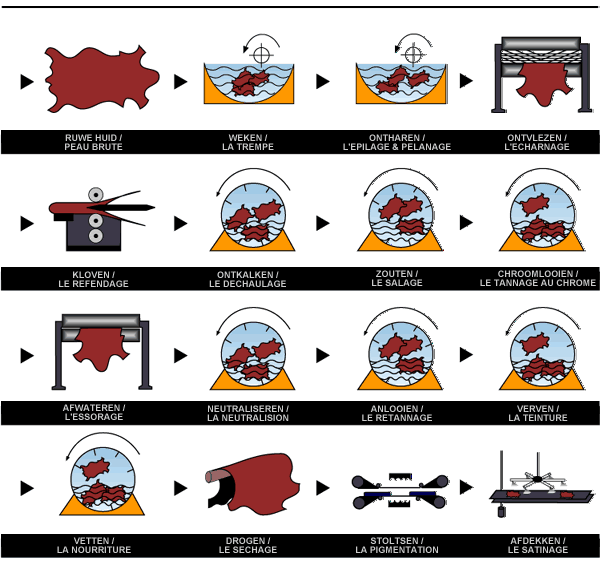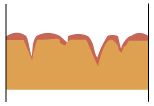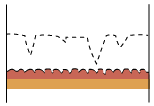About leather
The production from hide till leather.

Full aniline leather

Only the best raw hides, as a rule, are used to make full aniline leather. This technique is sometimes employed as well on "wild" hides and other types of raw hide which may, in some cases, have a very advantageous "grain".
Of all the leather types, the untreated full aniline leather is the most supple, because it has no surface coating to protect against spillages and soiling. This makes it extremely susceptible and vulnerable to stains and other external factors.
In the case of aniline dyeing, the dyestuff penetrates deep down into the leather. Seeing as aniline dyes are usually transparent, the surface of the hide will, therefore, retain its natural look. On lounge suites with large surfaces of leather,
the natural differences in tone therefore produce a pronounced "cloud effect".
Considering the fact that 7 to 8 hides are needed to make a 3-piece suite, it’s quite possible, therefore, that slight differences in tone are noticeable, since the dyestuff may be absorbed to differing degrees by the different hides.
Semi-Aniline leather

When making a semi-aniline leather, much tougher technical requirements have to be satisfied than in the manufacture of the full aniline leather types. Why is this? Well, when finishing semi-aniline leather, the prime concern is to retain the softness, natural appearance and favourable characteristics of the leather and, at the same time, to create a durable, natural product.
The dyeing process, using aniline dyes in various colours, takes place in drums (tanning vats). In the ‘soft’ method of finishing, organic pigments ONLY are used, whereby the leather:
- is protected against dirt, environmental conditions and ageing
- a more even and level coloration is obtained.
The finishing of the leather is an upgrading process which is comparable to the work of a goldsmith or a diamond cutter/polisher.
Corrected grain pigmented leather

For this leather type, lower selection hides are used which don’t meet the high standards for the manufacture of full aniline leather or semi-aniline leather.
The grain side is coated with a surface coating which, ordinarily, consists of organic dyestuffs.To remove surface imperfections in the leather (e.g. excessive scarring), the top layer is often abraded (i.e. buffed or sanded), after which an artificial grain pattern is embossed into the surface.
Corrected grain leather has many useful characteristics and high levels of colourfastness, but isn’t as supple and "breathes" less easily.


